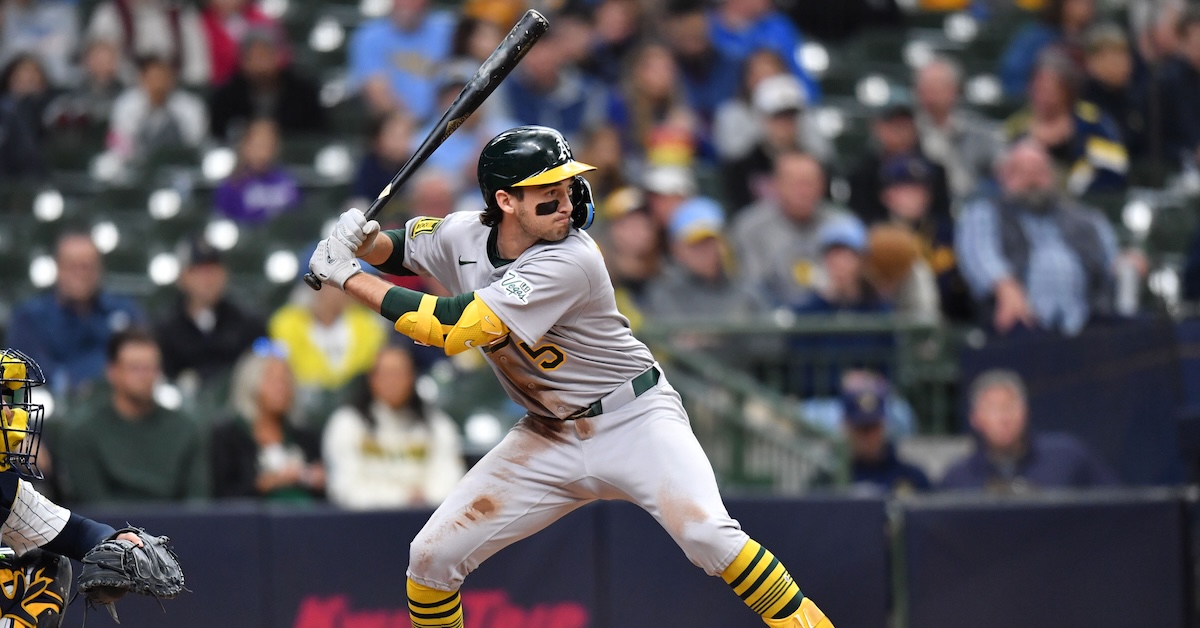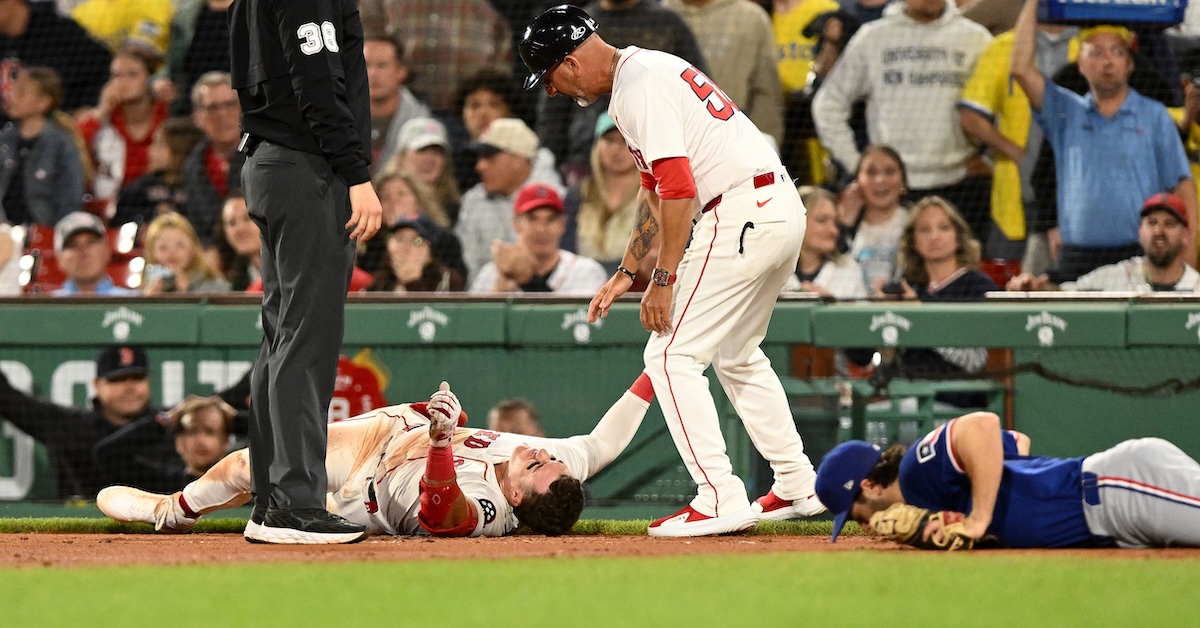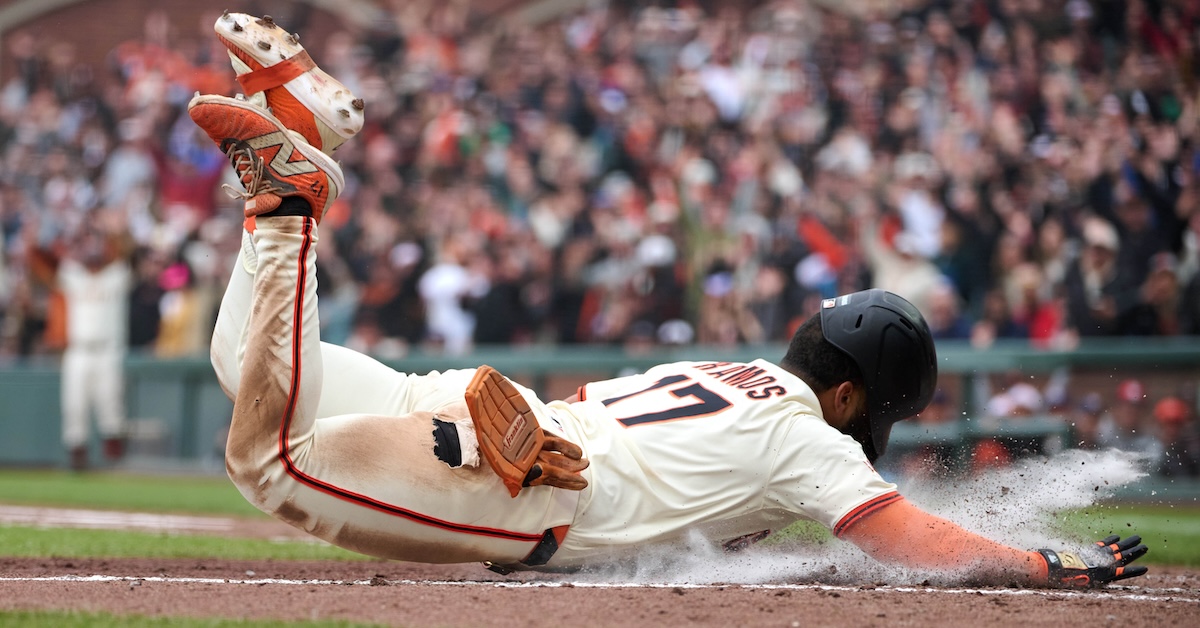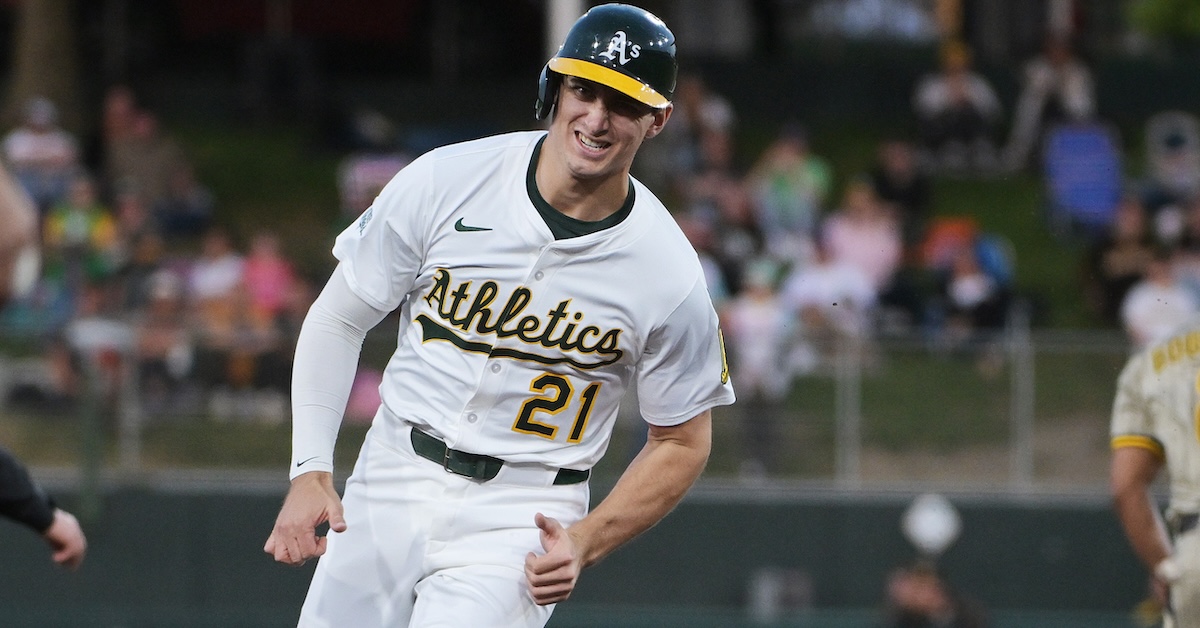Behold! The Most Improbable Home Run of the Season
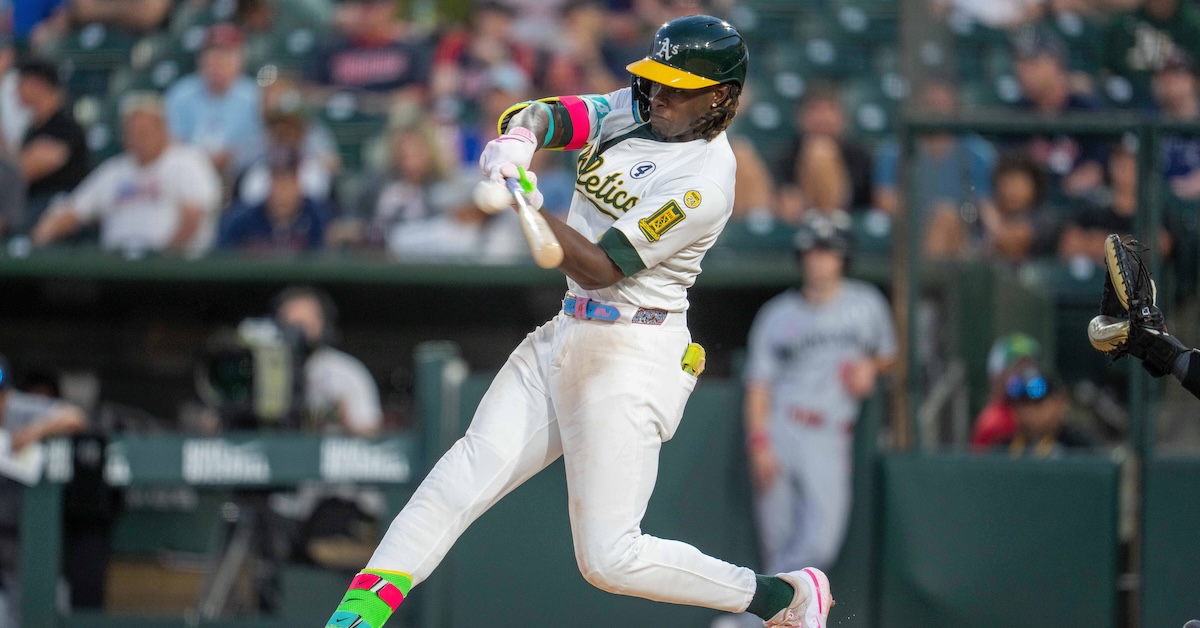
Lawrence Butler does a lot of things well, but he cannot hit a high fastball. Entering play on June 2, Butler had just one career barrel against an elevated fastball: A deep fly out off an 87.5 mph Trevor Williams “heater” in the dog days of 2023. In 2025, he’s whiffing on over half his swings at high heaters, per the Baseball Savant-defined shadow zones at the top edge of the strike zone. (That’s attack zones 11, 12, and 13 for the Savant search heads.)
Most of the hitters with high whiff rates on top-rail four-seamers have steep swing planes. (Aaron Judge and Luis Robert Jr. are two notable examples.) Not Butler: His 31 degree swing tilt is actually a bit flatter than the major league average. Butler’s primary issue is timing — his average attack direction on these pitches is oriented 18 degrees toward the opposite field; his zero degree attack angle is perfectly flat. Whatever the reason, it’s a clear hole, and certain pitchers are primed to exploit it. Read the rest of this entry »

